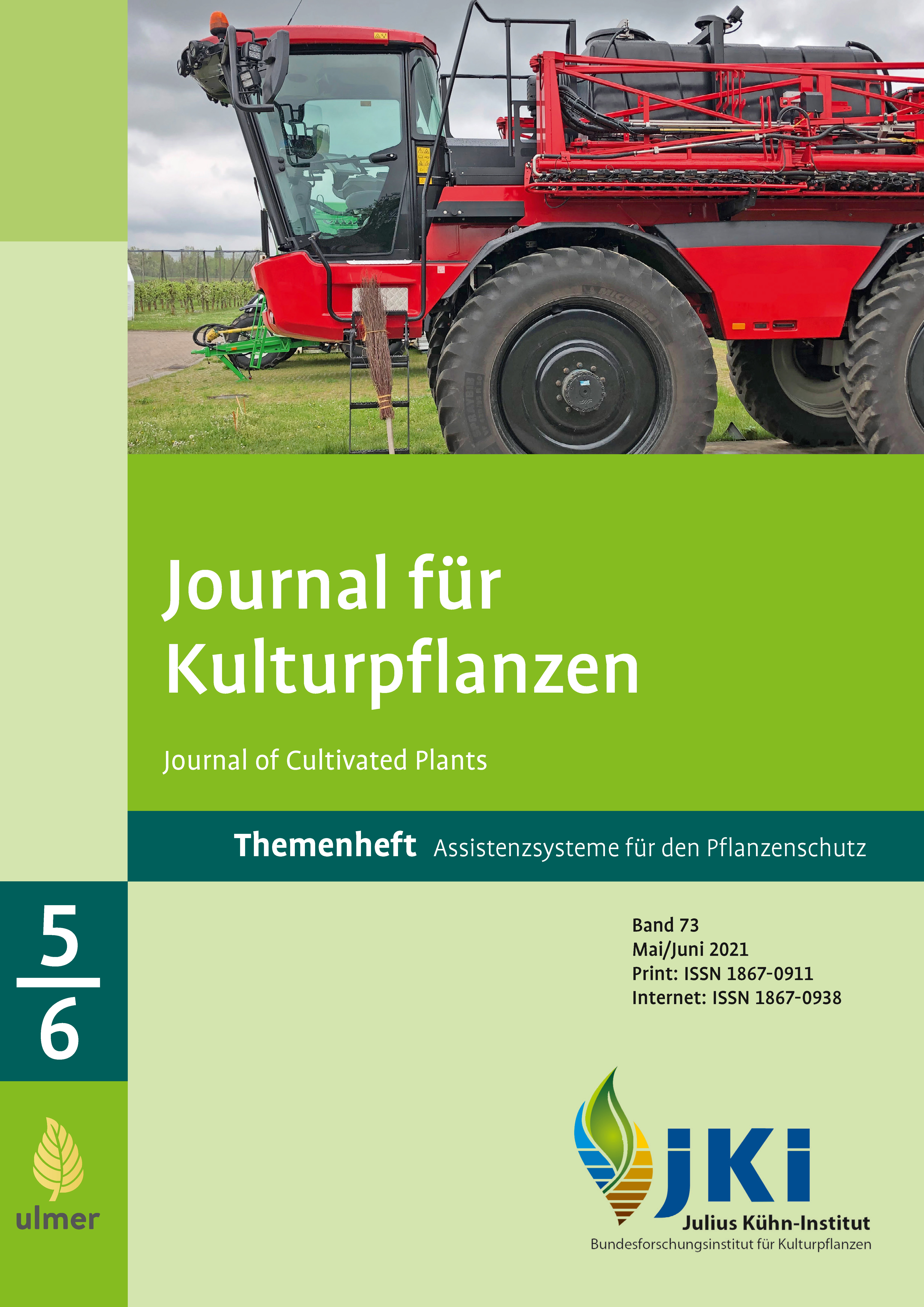Key performance indicators and economic assessment of site-specific pesticide applications with direct injection and application assistance system
DOI:
https://doi.org/10.5073/JfK.2021.05-06.08Keywords:
site-specific pesticide applications, scenario analysis, plant protection cost-webservice and benchmark-webservice, pesticide cost savings, extended gross marginAbstract
Site-specific pesticide applications have a high potential to promote reductions in pesticides compared to conventional pesticide applications. Within the research project ‘AssSys’, site-specific pesticide applications with a direct injection sprayer system and an automatic application assistant were evaluated economically with respect to herbicide and fungicide applications. The economic assessment was based on field trials and scenario analysis. The field trials were conducted in 2018 and 2019 in the North of Germany. As key performance indicator at farm level, extended gross margins were calculated. In the scenario analysis, two site-specific application scenarios were compared to conventional uniform treatment, referring to a model farm. Weed monitoring was conducted as (1) standard procedure according to integrated pest management, (2) camera-based and (3) drone-based in the field trials. The application assistant aims to support farmers in decision-making and practical implementation of site-specific pesticide applications either in the planning stage or as ex-post assessment. For the economic assessment of site-specific pesticide applications, several key performance indicators were identified and implemented in the plant protection cost-webservice and benchmark-webservice within the application assistant. Pesticide application costs include plant protection products as well as labour and machine costs of monitoring and pesticide applications. Investment costs of the necessary technical equipment for site-specific applications were considered. The economic scenario-analysis showed average pesticide cost savings (plant protection products, labour and machine costs) from 26 % to 66 % for site-specific applications compared to conventional applications. The average extended gross margin for site-specific applications of 787 € ha–1 compared to 631 € ha–1 for conventional (uniform) application indicates a clear economic advantage of the site-specific application scenarios. Site-specific pesticide applications can support farmers in implementing precise, sustainable and also economic pesticide management and may thus contribute to meet the goals of the new European Green Deal to reduce pesticide use and risks of pesticides.
Downloads
Published
Issue
Section
License
Copyright (c) 2021 The author(s)

This work is licensed under a Creative Commons Attribution 4.0 International License.
The content of the journal is licensed under the Creative Commons Attribution 4.0 License. Any user is free to share and adapt (remix, transform, build upon) the content as long as the original publication is attributed (authors, title, year, journal, issue, pages).
The copyright of the published work remains with the authors. The authors grant the Journal of Cultivated Plants, the Julius Kühn-Institut and the OpenAgrar repository the non-exclusive right to distribute and exploit the work.







